Incubating future movements in travel and culture
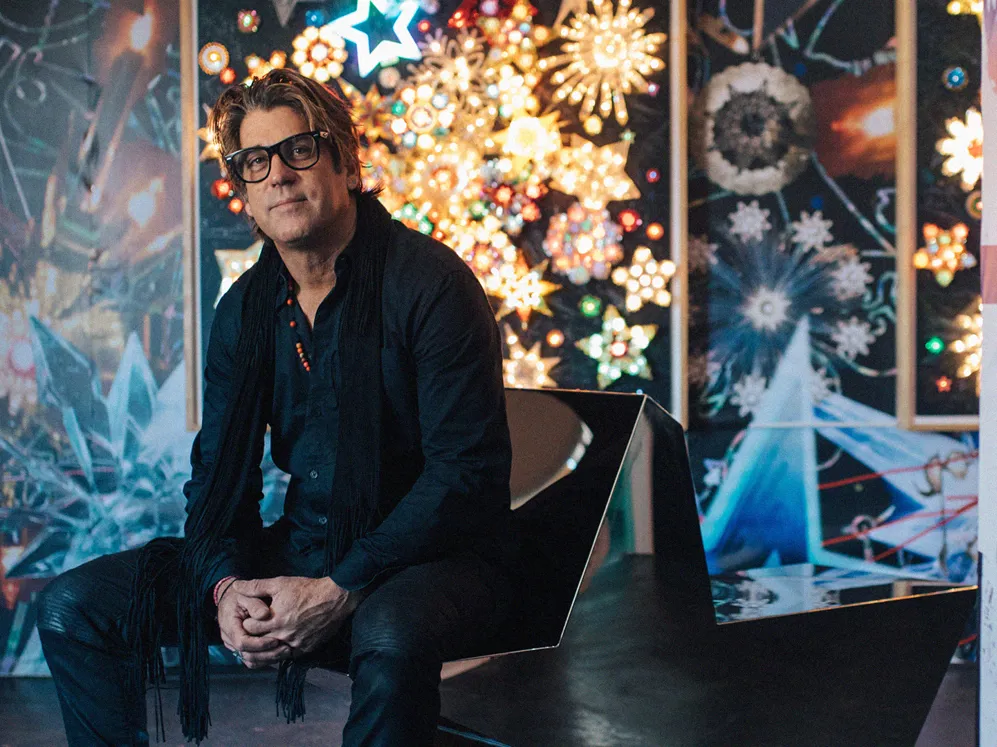
Words Carolina RaminezImages Arnaud Montagard
Puerto Rican born visual artist Carlos Betancourt is credited with helping to launch the Miami art scene of the 1980s. His influential studio, Imperfect Utopia, was an important incubator of the city’s avant-garde—sowing the seeds that would help Miami grow over the following decades into a world-renowned art destination. His work explores memory, beauty, and the passage of time, re-examining and reinterpreting the past in a mesmerizing kaleidoscopic style. In his installation for Further Marfa, “Process Ritual: Future Eternal II,” Betancourt returns to the Christmas decorations and tree toppers of his childhood that he and his mother had to leave behind when they moved from Puerto Rico to Miami. This profound loss led him to obsessively collect discarded light objects from secondhand stores across the world. For the exhibition, he incorporates these collected objects, as well as new depictions and creations into a series of murals, prints, and interactive wall assemblages—activated by a battery-powered magic wand.
Carlos Betancourt: “Process Ritual: The Future Eternal” is inspired by my memories; my work is highly personal. The work is a personal collection of tree toppers provoked by my memories as a child in Puerto Rico, visiting homes during the holidays—similar to what North Americans refer to as Christmas caroling, except the Latino way is a bit more festive and starts after midnight. You are going home to home where they offer you food and drinks, with a piano, maracas, and a tumbadora. I was always mesmerized by the tree toppers. They were magical. That stayed with me for decades. When we moved to Miami, that first holiday season I asked my mother, “Where are the tree toppers?” And she said “Oh, we had to sell them to move on,” and it was traumatizing. I was only 15, 16 at the time and couldn’t believe it. I started collecting them at a young age, locally at first, then on eBay. I grew up as an artist and understood that objects can be embedded with memory and it’s the role of the artist to activate them. With my work, they take on a different force. They are no longer tree toppers.
Betancourt: Sometimes I look at it as I'm trying to worship these common objects that at a time were really meant to be disposable. Sometimes it's honoring the designer and what went into the process. I want to create this magical object that someone may fall in love with. I like the mystery of it; I explore a lot of that in my work, mystery and beauty. I don’t need answers all the time. My experiences are in the visual beyond. I like people to experience it first and foremost as a visual experience with hardly any words to back it up. That is how I react to art; that is how I collect art.
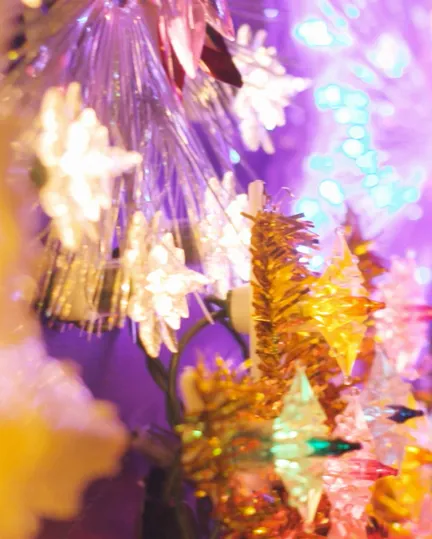
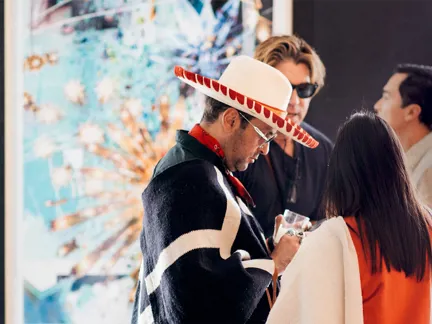
Betancourt: I have a piece called “Shopping Cart Atomic,” and a lot of people think it's a statement about the horrors of disposable culture or the accumulation of objects, when at the same time I think there is a freedom to objects. Let’s not forget there is a person behind them, like myself, that was involved in the creative process of designing these objects. Yes, we live in a world of mass production, but a lot of my manipulation goes into the context of what they can inspire and the memory that each individual may have to add. There is an architect, Morris Lapidus, who was the architect of [1950s-era Miami hotels] the Fountainbleu and Eden Roc. When he was designing the interior, he would put an antique vase he acquired in his travels in Florence or Venice next to plastic flowers, for example. There was a union to these objects that was important to him—a new memory that can be provoked. There are some ornaments that are more expensive than others, but that's not what attracted me to them—it's the craftsmanship and the mystery.
Betancourt: My brief experience with Marfa has many layers. It emphasizes what's important to many artists, which is to shut down the noise. One of the reasons Judd came here was because it's so isolated and quiet. Something I found very monumental was the sense of connection and spirituality within a place. The authenticity of a place is not very easy to find, especially in North America, where pop culture has taken such a predominant role—not in Marfa either. We had to look. I wanted to go where real Marfian locals go. It's incredible how something can be gentrified even if that is not the original intention. I believe that an artwork has its own life and its own destiny and that if you let it, it will find a place where it fits most appropriately. Marfa is a place for starry nights, and this series explores the rituals, cosmos, infinity, the future and the obsession with what the next thing is to come. But at the end, the root of my work is memory and poetry, and that's what I get when I see a starry night: poetry, memory, mystery. This is a place for that, first and foremost.What to you is the importance of a project like Anónimo?I think Alejandra and Anónimo are creating conversations and shaking things up to a degree—it's not always about the resume. One of the most incredible things about being an artist is that people don’t recognize you; they recognize your name and your work but nobody knew the faces of Picasso, Matisse. If Anónimo can create an environment where you bring the focus back to the actual artwork, that's what artists actually enjoy. The art world and the mainstream world may not enjoy that, but we do. It keeps us focused and shuts out the noise. My studio director, Alberto La Torre, and I have a foundation, the Betancourt La Torre Foundation, and we were thinking of how we can bring this anonymity to the academic aspect of the art world. Sometimes people get so obsessed with finding an academic definition of an artwork, when there are very personal ways to explain an artwork. Simple questions, like what was the artist doing at the time? Who was he dating? Look at Picasso’s work for example, his relationships, memories, the things that provoked it, can all be summarized in both an academic way but also in a highly personal way.
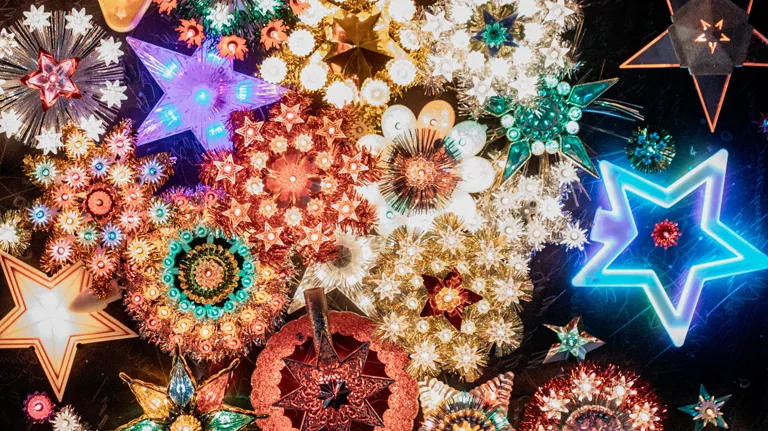
Betancourt: There is a sense of authenticity and pride in their culture. Most people know the names of the Aztec and Mayan gods. Keith Haring once said that everything primitive will always make us new, and I truly believe that. Once you know your roots, the possibilities are endless. What's happening in Mexico is the future—it is monumental. [The United States] has been possessed by pop culture. It’s a country based on trends, whereas in Mexico it’s in your face where you come from, similar to Puerto Rico.
Betancourt: The first part, “Process Ritual,” is trying to remind myself as an artist, as cliché as it sounds, that the work is in the process, and the process is the ritual. Especially for an artist that works so much with the past, I have to keep myself very clear. The second part of the title, “The Future Eternal,” is a reference to the times that we are living in in the States. So much is defined by the future. What is the next thing you are doing? What is the next idea? What is the change? When change isn’t always good. Not everything new is great. Not everything old is bad. “The Future Eternal” is a reference to that, to remind myself to be present. This machinery of always inventing and coming up with something new has repercussions. We have to keep ourselves in check. There are certain things that define me as a person, as an individual, that give my life meaning, like this little wand!
Further Borderlands
On a windswept stretch of Texas desert re-envisioned as a minimalist art mecca, Further Marfa set out on an exploration of borderlands: between art and commerce, city and country, Mexico and red-state USA, somewhere and nowhere.
Further Borderlands
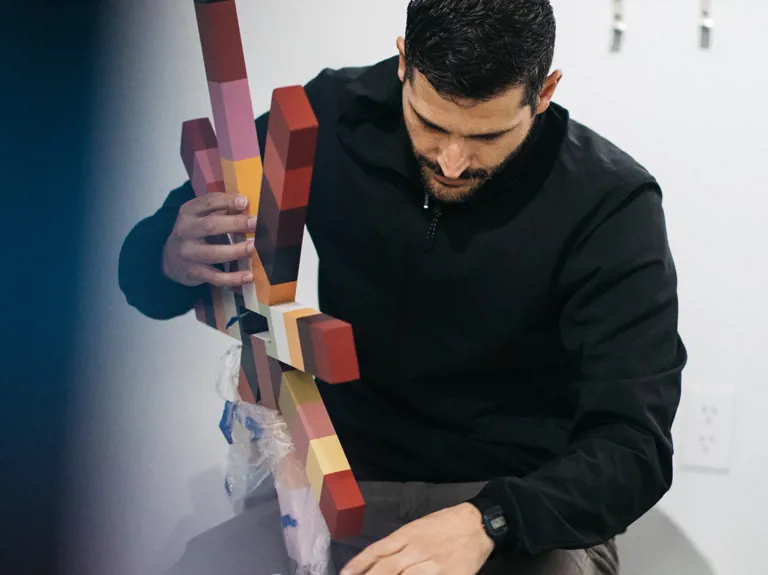
In his installation for Further Marfa, mixed-media artist Erick Meyenberg employs a color study to highlight the ecological dangers of the proposed border wall between Mexico and the United States.
Further Borderlands
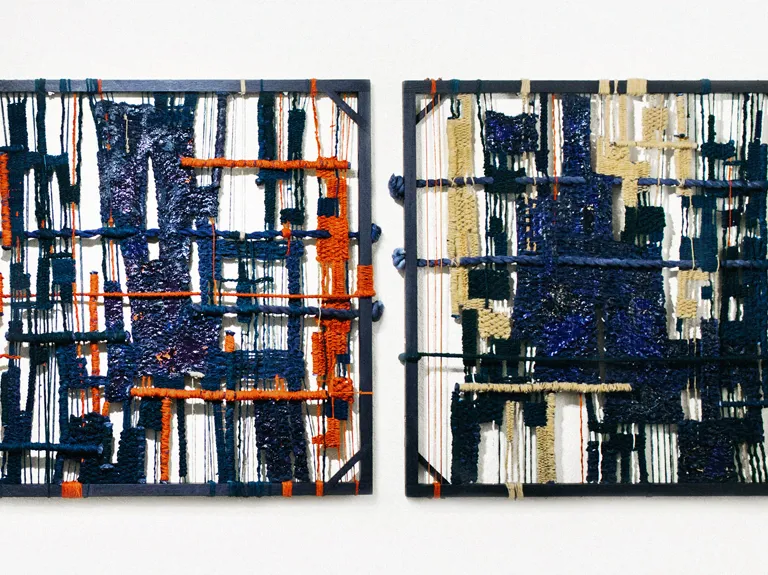
Textile designer Gerardo Ruiz-Musi explores technology, the self, and the concept of truth with his exhibition at Further Marfa.
Further Borderlands
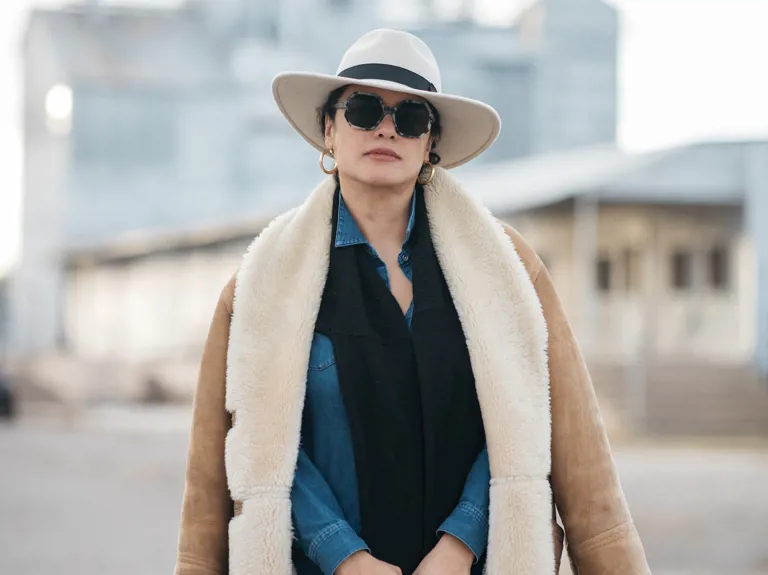
Since opening a decade ago, Pamela Echeverría’s Labor gallery has made waves in the booming Mexico City art world and beyond by highlighting provocative, research-based work that engages with current events.
Further Borderlands
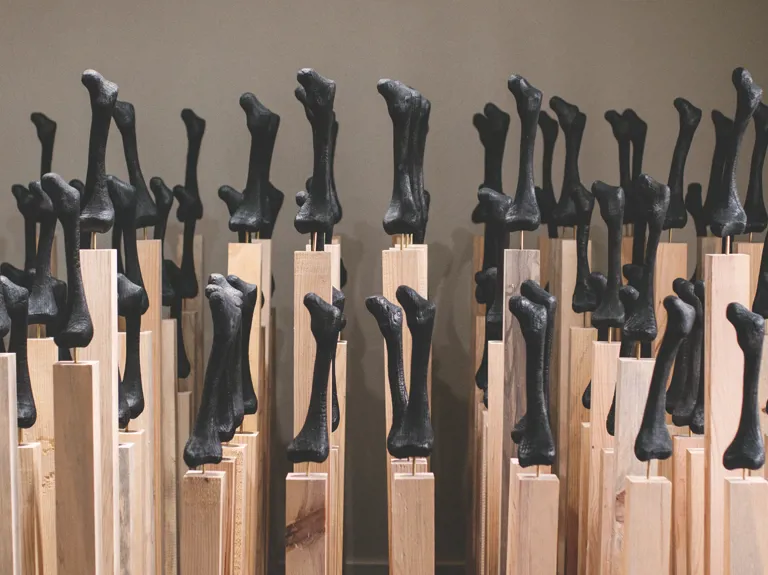
Further speaks to design collective La Metropolitana about their first work of art, an installation that uses wood to evoke the devastation of Mexico’s ongoing drug wars.
Further Borderlands
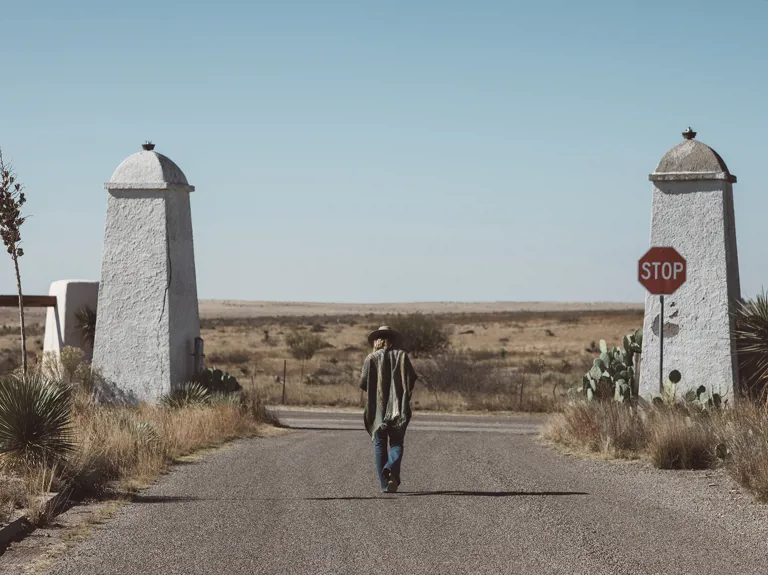
With her pioneering Mexico City-based platform Anónimo, Alejandra Martínez is concealing authorship until a work of art is sold in an attempt to free it from preconceptions.